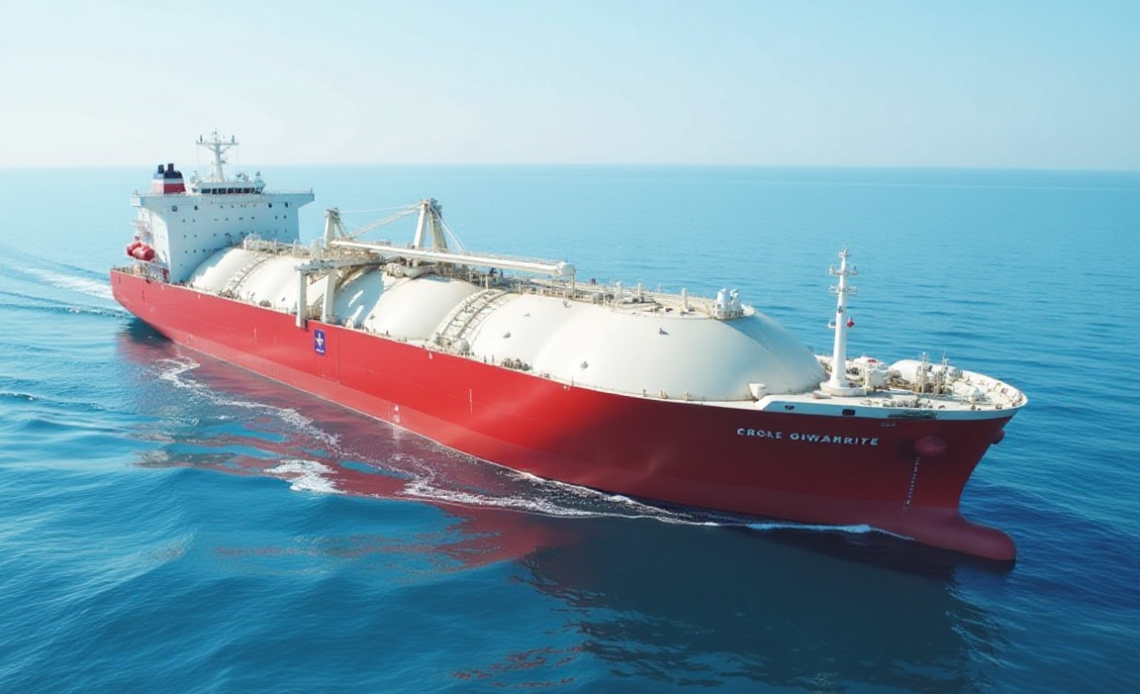The European gas market has seen a slight dip in benchmark prices, with the TTF benchmark falling to EUR 32 per MWh.
“This was probably due to the news that Norway is exporting more gas to the EU via pipeline again after supplies were significantly reduced for a good three weeks due to maintenance work,” Barbara Lambrecht, commodity analyst at Commerzbank AG, said in a report.
The increased flow is expected to accelerate the replenishment of European gas storage facilities in the coming weeks.
Despite the recent uptick, the gap between current storage levels and the usual fill level has remained consistent at approximately 8.5 percentage points over the past three weeks.
Currently, storage facilities stand at just under 82% capacity.
Russian LNG ban proposed, US to fill the void
In related news, the European Union’s proposal to ban imports of Russian LNG a year earlier than planned, at the beginning of 2027, as part of the 19th package of sanctions, has had minimal impact on gas prices.
According to data from the Bruegel think tank, Russia still accounted for a significant 14% of the EU’s LNG imports in the first eight months of this year.
However, the consensus is that the United States, which has dramatically increased its LNG exports to the EU, will be able to compensate for the loss of Russian supplies.
Lambrecht said:
However, it can be assumed that the US, which this year already accounted for 60% of EU LNG imports, twice as much as in 2021, with LNG imports rising at the same time, will be able to compensate for the loss of Russian supplies thanks to the expansion of its LNG export capacities.
The EU had previously indicated its intention to increase LNG purchases from the US during tariff negotiations.
EU emissions trading prices defy expectations
In a surprising turn, prices in EU emissions trading have shown remarkable strength, climbing by approximately 11% since mid-August to reach a seven-month high of EUR 78 per ton last week, according to Commerzbank.
This rise occurred despite the traditional summer lull in the European gas market.
“It remains difficult to determine what has contributed to this strength, as the few positive factors are offset by numerous negative ones,” Lambrecht added.
One possible contributor is increased buying interest ahead of the end-of-September deadline for delivering emission allowances.
At the same time, however, it should be noted that, according to BNEF, emissions in the EU power sector fell by 16% in August compared to the previous month, which is the lowest figure for August in five years.
Furthermore, improvements in eurozone business sentiment, particularly in the manufacturing sector where the sentiment index (PMI) briefly climbed above the expansion mark of 50 in August for the first time in three years, were short-lived, with the September report showing a PMI of only 49.5 for industry.
The ongoing postponement of the vote on the interim target for reducing emissions by 2040, due to a lack of agreement on conditions, also casts a shadow over the EU’s climate policy ambitions.
Given this, Commerzbank is somewhat doubtful that the recent price recovery is sustainable, particularly as it coincided with a substantial increase in investment funds’ net long positions.
These positions surpassed 100,000 contracts, a level not seen since 2021.
Lambrecht said:
Such a strong positioning bears the risk of a correction.
The post European gas prices stabilise as Norwegian exports resume appeared first on Invezz







